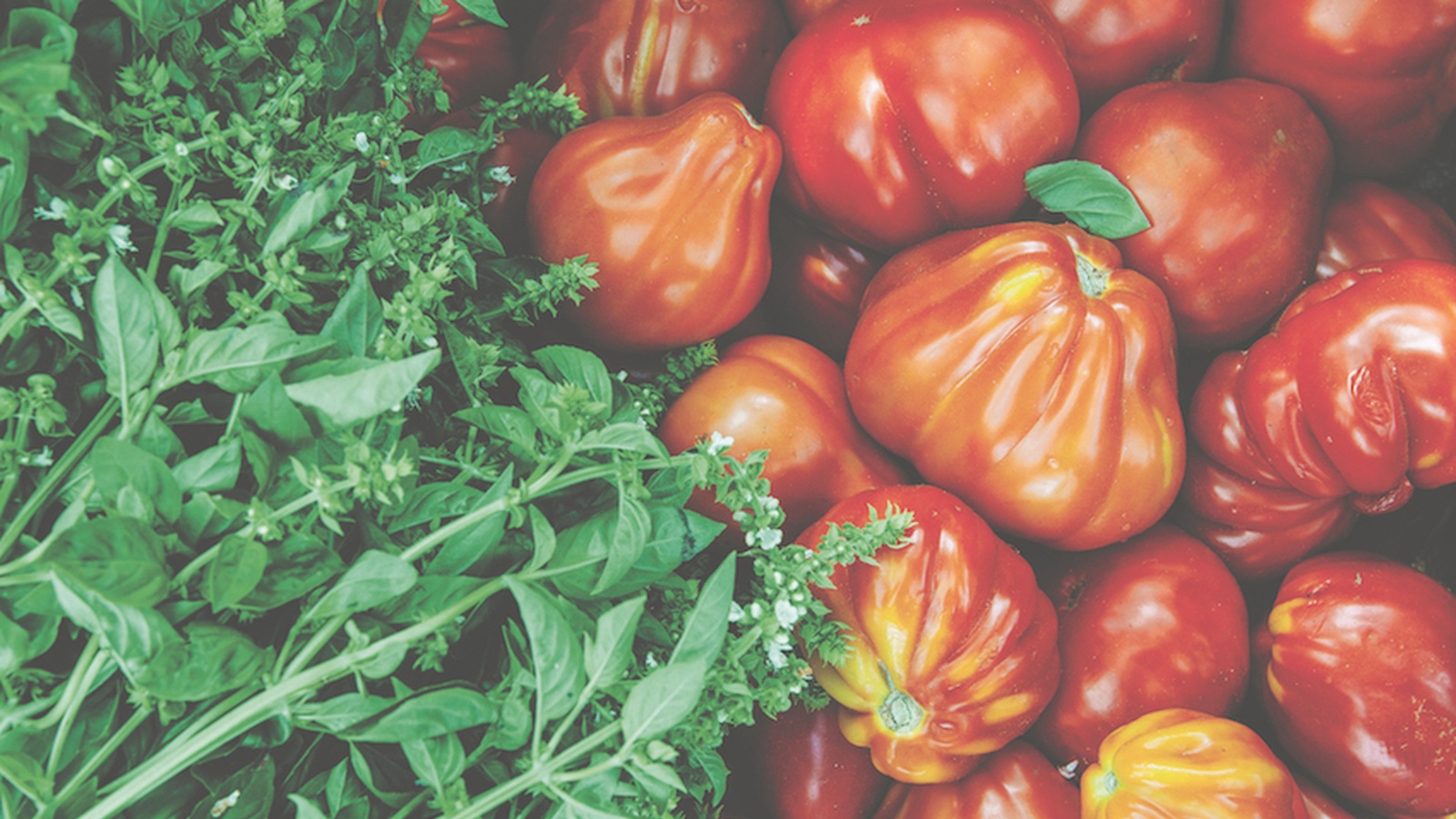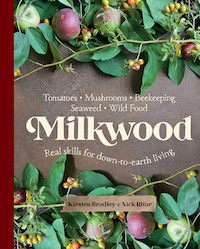How to Make Your Own Passata (Additive & Preservative Free)
Passata is simply tomato purée or crushed tomatoes. Some people will tell you that it must not contain skin nor seeds, but are we going to waste all that home-grown goodness? No way! Leave the skin and seeds out if you wish, but we make our passata with the whole tomato, to capture every morsel of nutrient-dense happiness.
When you’re making passata on a grand scale, a motorized passata machine can help. The tomatoes go in the top, pulp comes out the side and the seeds and skin come out the end. You can then recombine the pulp with the seeds and skin for whole tomato passata.
If you’re making passata on a smaller scale, a food processor is fine – whiz up the whole tomatoes and you’re done. You can add herbs and garlic as well if you choose.
Alternatively, if your tomatoes are dense, beefsteak types, you can just quarter them and add them to clean jars with basil and salt. Smash them down a bit until their liquid covers them, add 2 tablespoons of lemon juice or vinegar per 1 liter (4 cups) with salt to taste and process like that. As long as your jars of tomatoes contain enough acid for them to be a safe long-term, there’s enough liquid to cover all tomatoes and the jars are pasteurized correctly, the options and recipes for preserved tomatoes are pretty endless.
TOMATO PASSATA
- Lots of lovely ripe tomatoes
- Herbs and garlic, to taste (optional)
- Salt
- Lemon juice or vinegar (see Tips)
YOU'LL ALSO NEED
- A large pot for mixing the passata
- Clean bottles or jars of a uniform size, with well-fitting metal lids
- A big pot with a metal rack in the bottom, or similar, for pasteurizing the passata bottles
- A thermometer
What to do
- Mush, crush or pulverize the tomatoes, then transfer them to a large pot. Add herbs and garlic, if you like. At this point, if you want extra thick passata or even tomato paste (concentrated purée), simmer the mixture until it reaches the desired consistency. (We rarely do this because it takes extra time and there are just too many tomatoes. It’s up to you.)
- Once you’re ready to bottle your passata, measure how much tomato pulp you have. Add 1 teaspoon of salt per 4 liters (1 gallon) of tomato pulp, and add 2 tablespoons of lemon juice or vinegar per 1 liter (4 cups) of pulp.
- Ladle the passata into the clean bottles or jars, leaving 2 cm (3⁄4 inch) free at the top. Tightly seal with the lids.
- Pour water into the big pot with the metal rack in the bottom so that it will come up to the top 5 cm (2 inches) of your bottles or jars, without covering them. Heat the water until it measures 85°C (185°F) on your thermometer, then carefully add the bottles, making sure they don’t touch. The water temperature will drop once the bottles are added, then slowly rise again. Once the temperature reaches 95°C (203°F), keep it at that temperature for 40 minutes, then turn off the heat (or switch your bottles for another batch). Carefully remove the bottles and set them aside to cool. Repeat the process until all your bottles of passata have been pasteurized.
- Once the bottles of passata are cool, label them with a date and what they are. Stored somewhere cool and dark, the passata will keep for at least 12 months, although ours never lasts that long.
Other Pasteurizing Techniques
- The rack in the bottom of the pot is there to prevent the bottles rattling against each other while they’re pasteurizing. Some other alternatives are to place each jar inside a sock or wrap it in a newspaper and secure it with string, then put the jars directly into your pot – this will stop the rattling and prevent breakage.
- On a large scale, the sock or newspaper method is sometimes used around bottles that are placed on their sides inside a 44-gallon drum of water that is heated over a fire. It’s good fun but it does take a long time, so it depends on your set-up.
- Fundamentally, if you can heat the passata bottles to 95°C (203°F) and maintain that temperature for 40 minutes, they should seal and store well.
TIPS
- Apple cider vinegar, apple scrap vinegar or white vinegar will all work well.
- You can buy special preserving jars for your passata, but using regular jars or recycling your old jars is also fine, as long as they have undamaged, screw-top metal lids. You can even use longneck beer bottles with caps – make sure you label and date them!
- Make sure everything is super clean. When we are making passata on a community scale using longneck beer bottles, we sterilize all the bottles by giving them a final rinse in a bucket of clean water with a few small drops of iodine in it. (You can buy iodine from homebrew stores.)
ACIDITY
- Acids keep fruit, and also tomatoes, safe to eat in their shelf-stable, bottled form. When bottling fruit, you usually increase the acidity by adding sugar. When bottling tomatoes, it’s more common to do this by adding either vinegar or lemon juice. Some tomatoes (especially some heirloom varieties) are more acidic than others, which is why some old recipes don’t add acid when making passata. But ‘best practice’ says that you should add vinegar or lemon juice at a rate of 2 tablespoons (or use half a teaspoon of citric acid) per 1 liter (4 cups) of passata. This ensures that the acidity is high enough to make the passata super-safe to eat for many months to come.
Images and recipes from Milkwood by Kirsten Bradley and Nick Ritar, Murdoch Books, RRP $45.00 Photography by Kate Berry and Kirsten Bradley, Illustrations by Brenna Quinlan.












